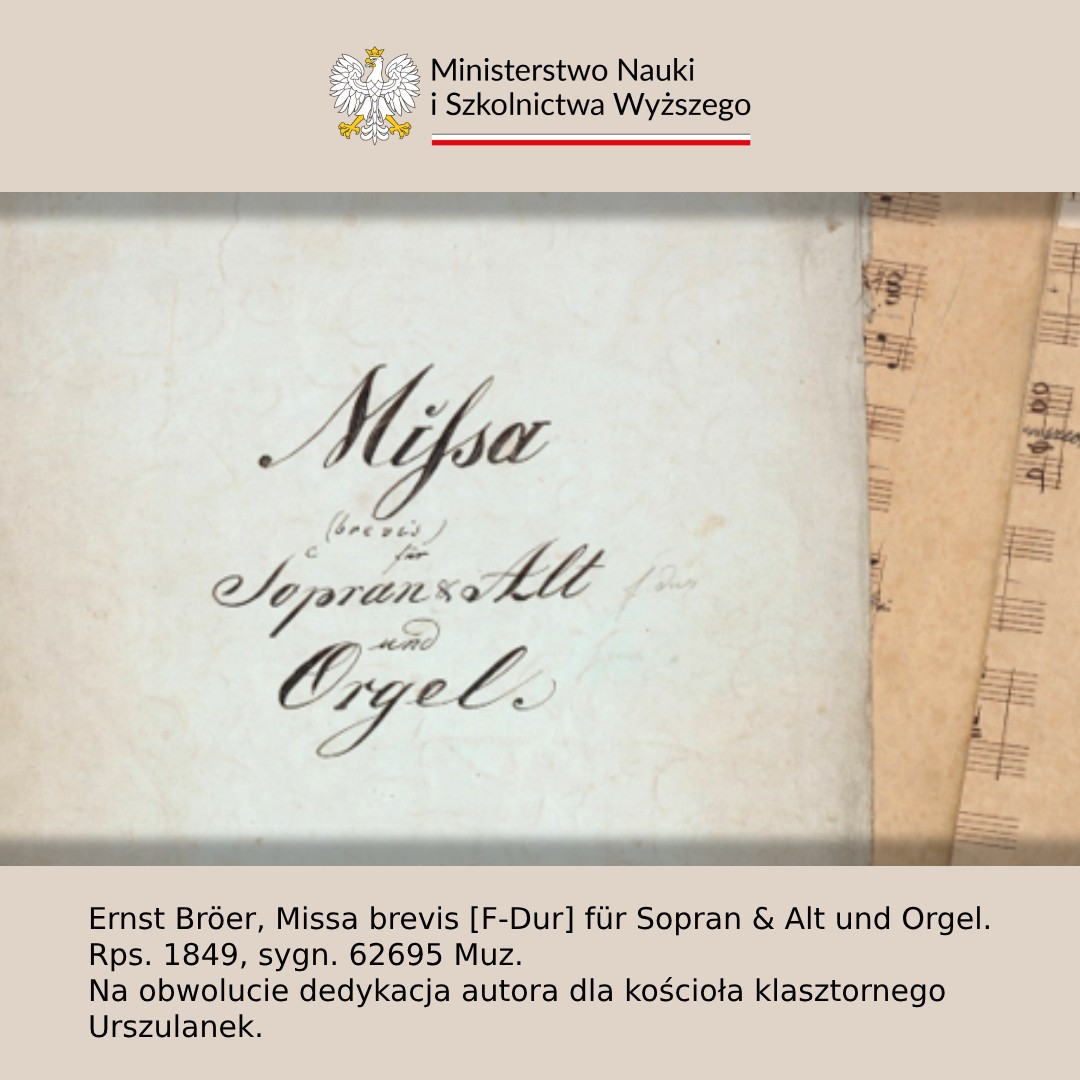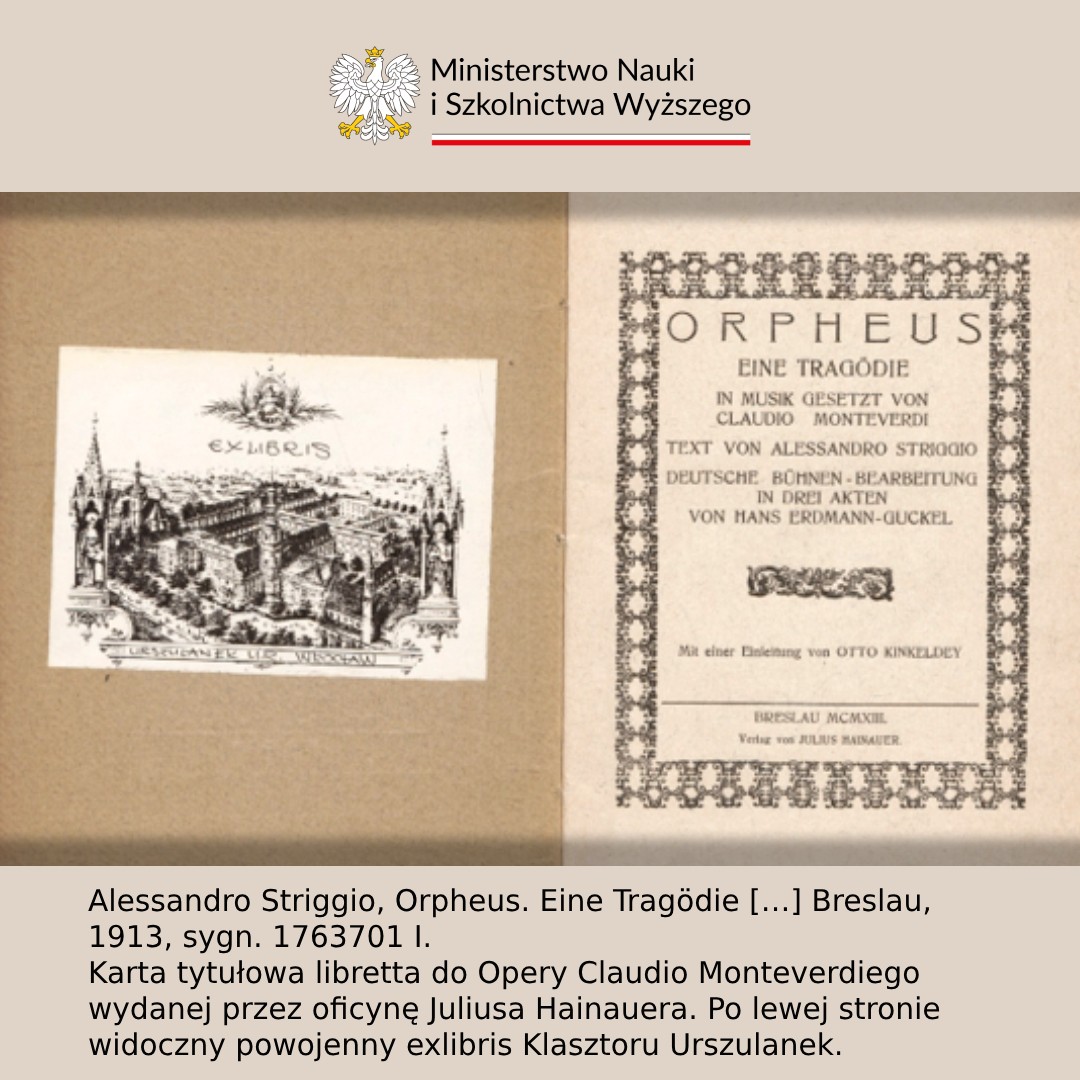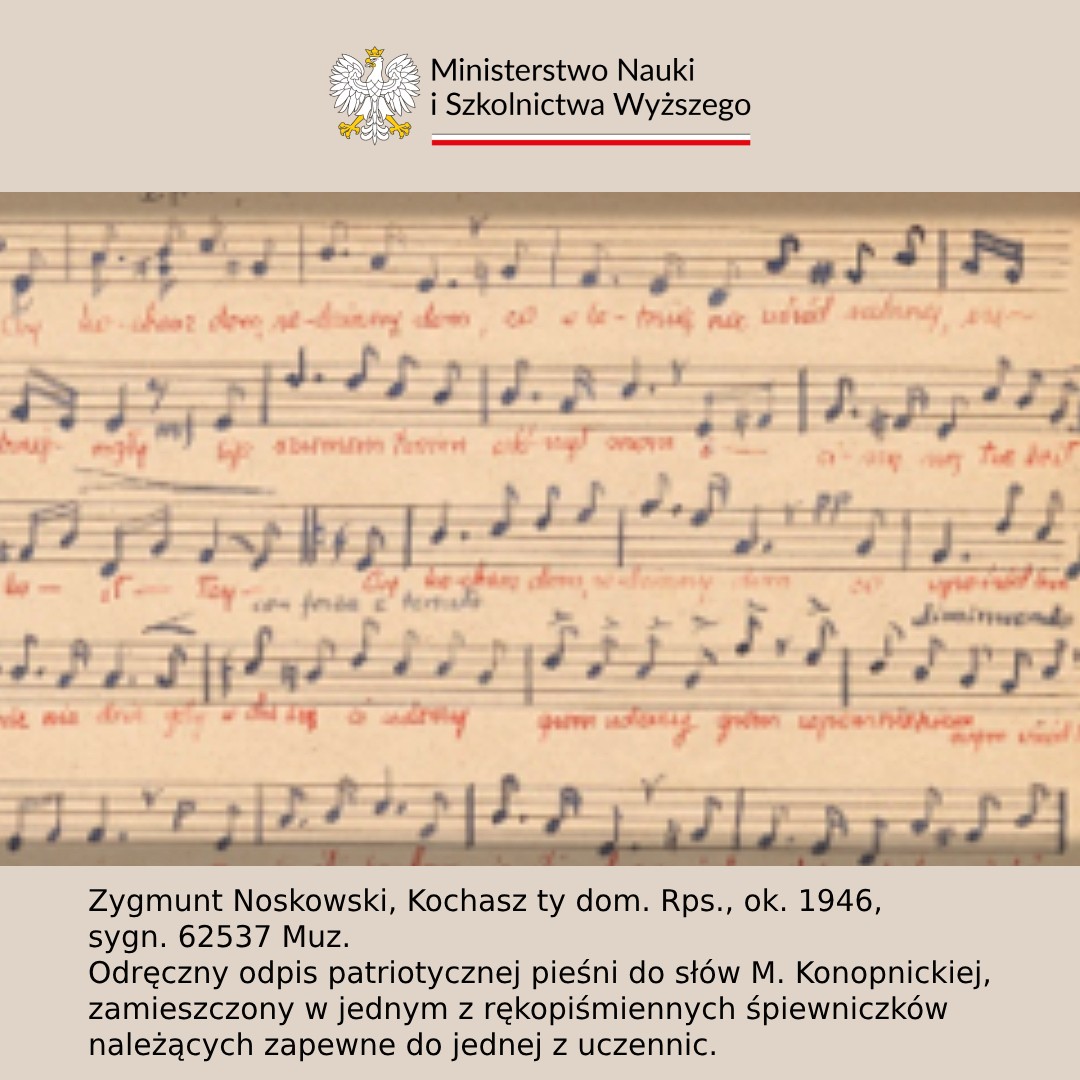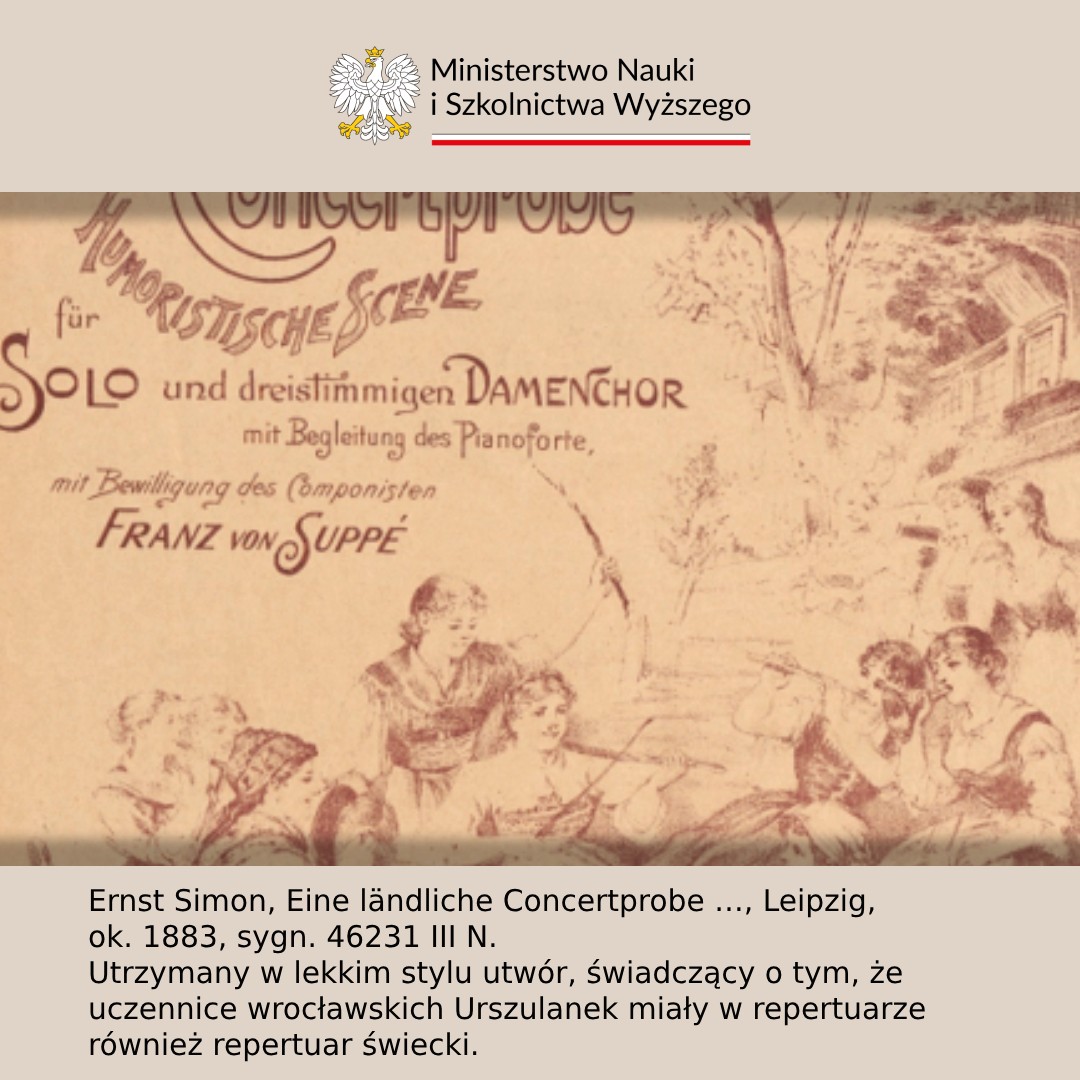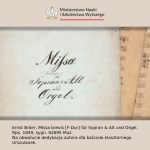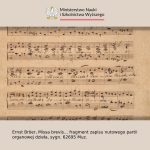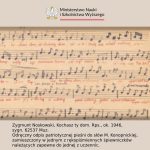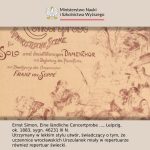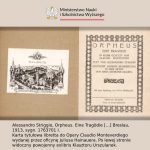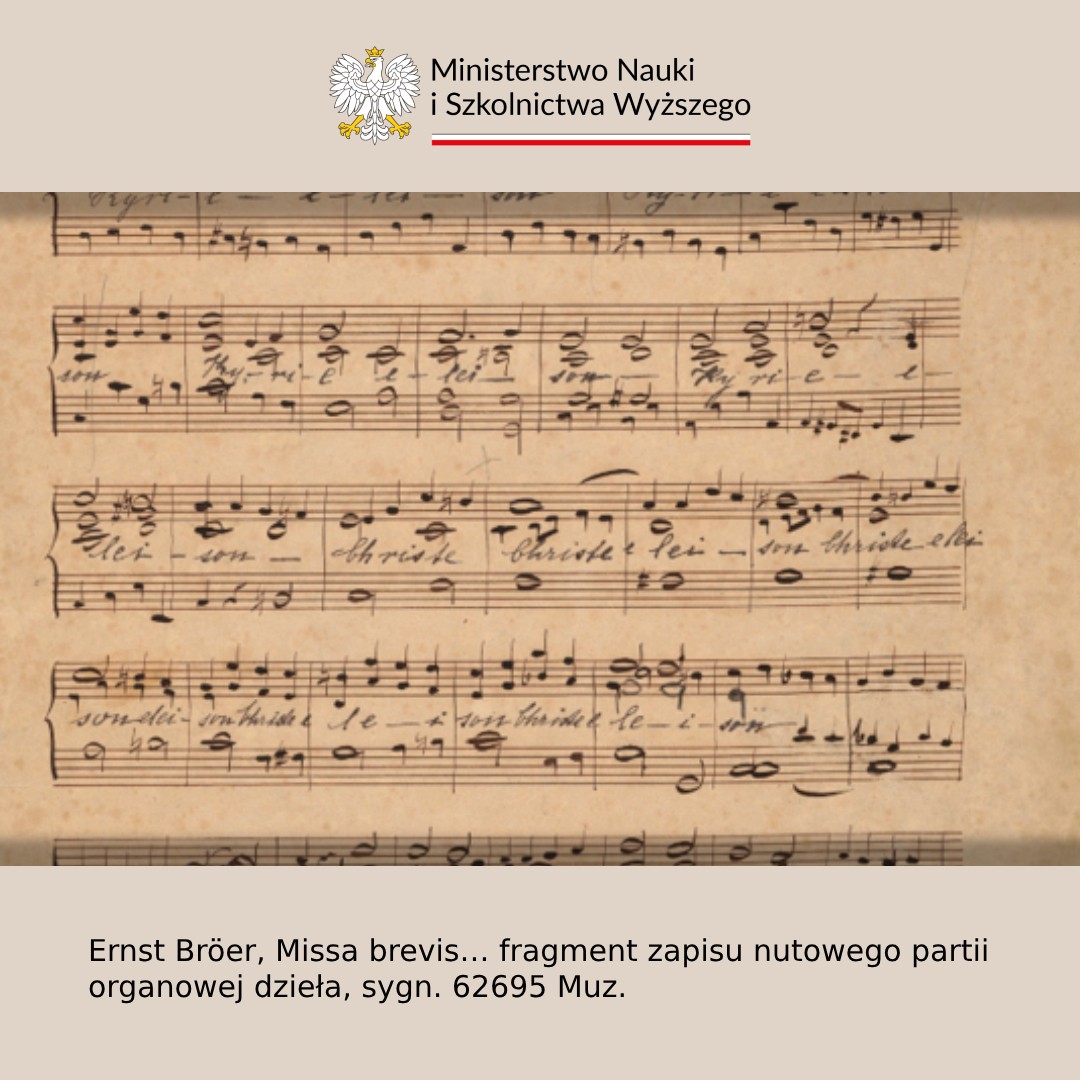
Musical collections from the former school library of the Congregation of the Saint Ursula in Wrocław are now accessible.
In the 2023/24 academic year, grants were given by the Ministry of Education and Science as a part of the Social Responsibility of Science Programme (agreement no. BIBL/SP/0012/2023/01). Thanks to this, the staff of the University Library in Wrocław could conduct documentation work on the musical collection from the historical library of the Ursulines of the Roman Union in Wrocław. The collection was received as a gift and it comprised over 1500 items.
The Musical History of Ursulines from Wroclaw
The Ursulines’ pedagogical activity in Wrocław dates back to the year 1686. Shortly after arriving in Wroclaw, Ursulines began the education of 140 children. Among the Ursulines, there was always a group of Polish descent. The convent school was divided into free elementary and paid boarding schools. This educational model was developing throughout the next years, which provided girls of various religious beliefs with education. In the archival documentation we can find information that in 1824 there were 634 students, 422 of which were Catholic, 200 Evangelic, and 12 of Jewish faith. The convent was constantly developing and broadening its educational activity, despite disadvantageous conditions. In 1810, King Frederick William III stated the secularization decree that forced the Ursulines to leave their place and relocate to the former convent of Poor Clares in Wrocław. After adjusting to the new conditions, Ursulines continued to educate girls. The students were taught useful everyday skills, foreign languages, science, history, drawing, and importantly singing. The significant quantity of music materials in the school library shows the high importance of the singing classes. The collection stemmed from the curriculum’s emphasis on singing and the necessity of supplying sheet music for students in the music club, which eventually became the school choir. Students actively participated in the school’s musical life, as we can infer from the handwritten song collection reproduced using various techniques. Special music workshops are held within the school to further emphasise the importance of students’ musical education.
Cataloguing the Musical Collections
The project aimed to digitally catalogue and share information about 200 printed sheet music and 200 titles of supplementary music literature in a global database. Additionally, 200 extremely valuable handwritten musical works were catalogued. Printed sheet music and books were edited in MARC21 format in compliance with international cataloguing standards (RDA – Resource Description and Access). The descriptions were provided with complete sets of indexed authority headings, incl. personal information, corporate entities, series, and subject characteristics (National Library Descriptors – DBN). The created records of documents were entered into the public online catalogue of the University Library – OPAC (https://katalog.bu.uni.wroc.pl) and the international OCLC WorldCat catalogue (https://search.worldcat.org/). All the descriptions of musical manuscripts are in the international base of musical sources RISM (Répertoire International des Sources Musicales), which is the most comprehensive database of this type in the world.
Characteristics of the Collection
The catalogued collection includes handwritten musical works dedicated by Wroclaw composers to the Ursuline convent. Among them was a Mass with a handwritten dedication by Ernst Broër, an organist, composer, and singing teacher at the St. Matthias middle school in Wrocław (illustration no. 1,2).
Other works include sacred compositions by remarkable composers such as Giovanni Pierluigi da Palestrina, Franz Schubert, and Adam Krieger. The works by Wacław of Szamotuły, Józef Stefani, and Feliks Nowowiejski represented Polish music. An example of post-war education, which promoted patriotism among young students, was a piece of work titled Pieśń o domu with music composed by Zygmunt Noskowski and lyrics written by Maria Konopnicka (illustration no. 3).
Among the printed sheet music, numerous editions from Silesian music publishers, both from Wroclaw and smaller regional centres, are noteworthy. Religious vocal works dominate, including psalms, Masses, offertories, carols, and hymns. Instrumental pieces are made mainly for organ or grand piano and they consist of small forms such as trios, bagatelles, miniatures, and dances. There are also lighter, secular works, such as a composition of Franz Suppé’s piece with a charming genre scene connected with rural music-making (illustration no. 4).
The last group is a rich collection of publications, which helped in the process of conducting musical education. It includes lexicographical and biographical works, texts on harmony and music pedagogy, scholarly literature related to musicology, vocal training, organ playing, and other keyboard instruments. A considerable part of the collection includes the opera librettos. Particularly noteworthy is the libretto titled Orfeo by Claudio Monteverdi, featuring a stylised title page (illustration no. 5).
The catalogued collection spans nearly a century, from the mid-19th century to the early 40s of the 20th century. It predominantly features the works of Silesian composers.
A characteristic feature of the collection is the ex-libris stamp and historical signatures of the convent school library. Importantly, some pieces bear signatures of individual students as well as notes of the Ursuline sisters. The printed sheet music and musicological collection have been organized into a sub-catalogue titled Kolekcja muzyczna wrocławskich Urszulanek within the BUWr catalogue.
The realisation of the project has enabled this collection to enter a global scientific circulation, which contributed to the future further research. Open access to the description of this collection will serve as a valuable source of knowledge for future generations.
Text: Mirosław Osowski, Music Collection Department, Wrocław University Library
Translated by Julia Wąsowicz (student of English Studies at the University of Wrocław) as part of the translation practice.
